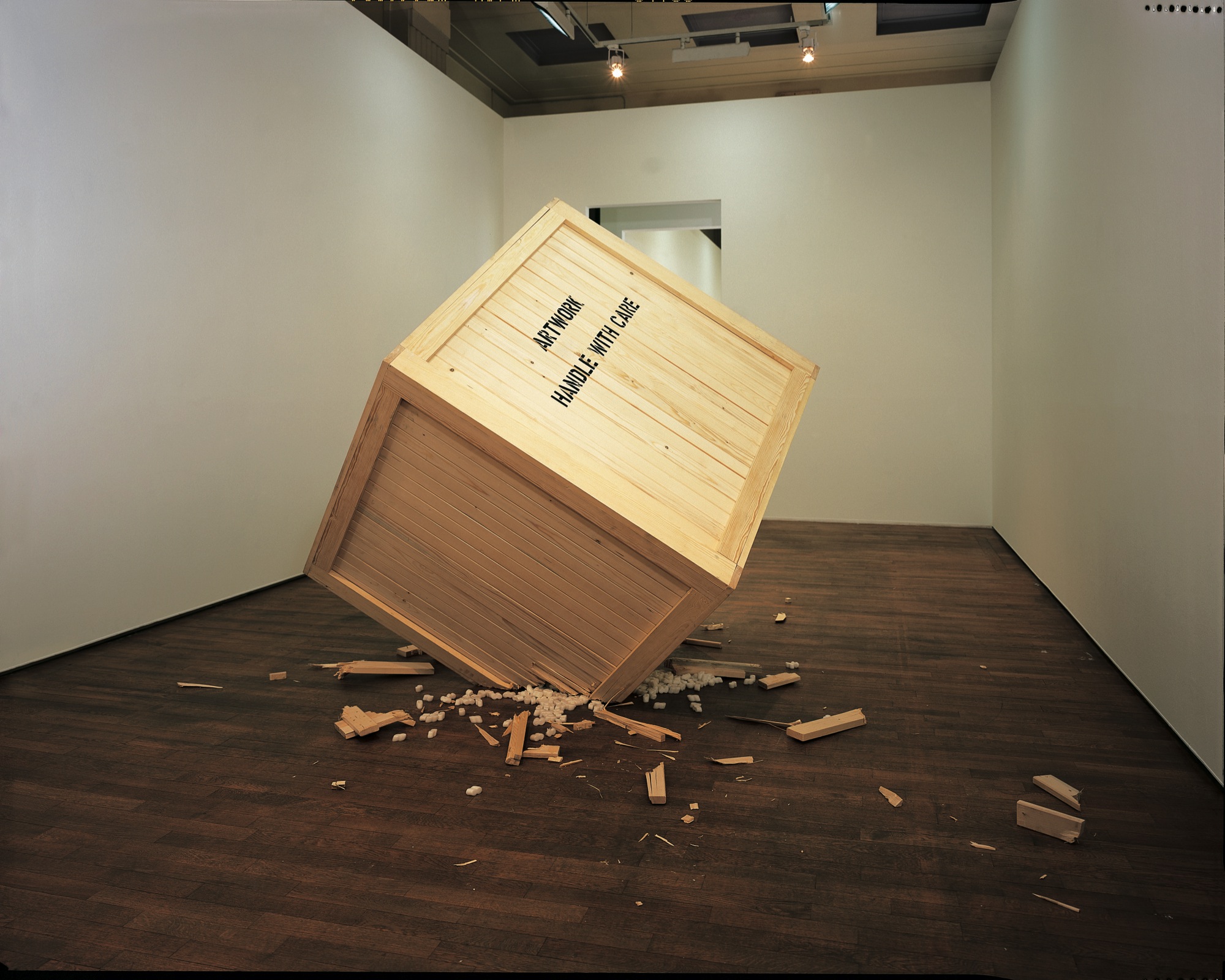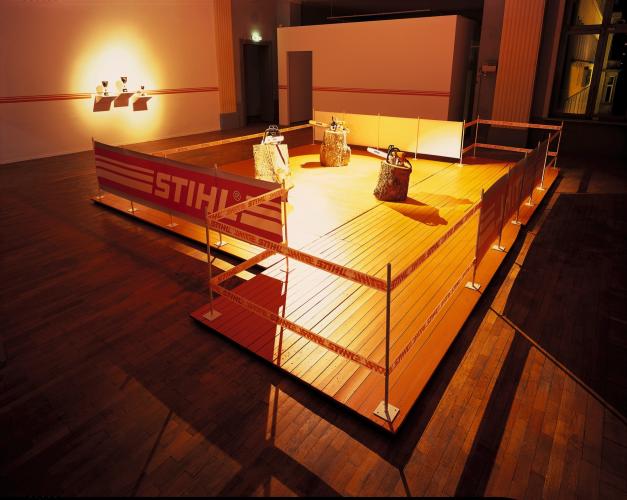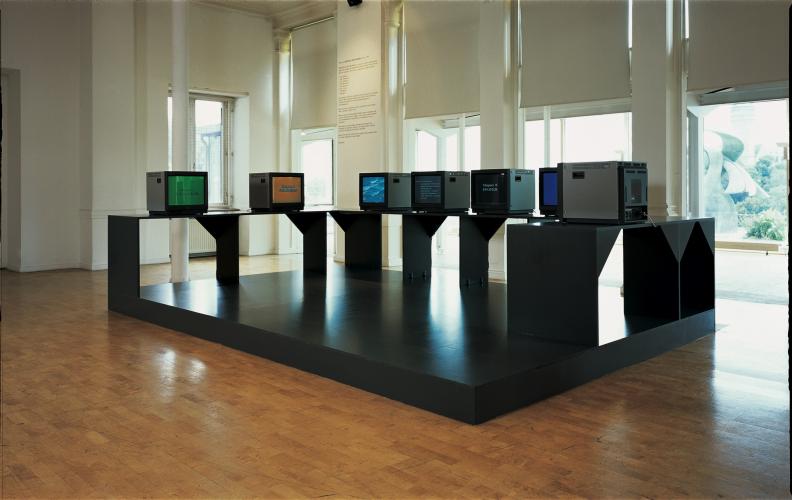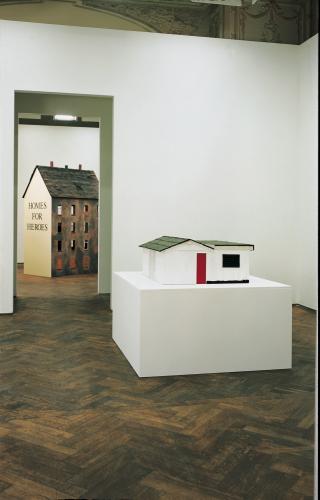
audit
How can the system called 'art' give a fair account of its activity?audit appropriates the notion of an internal audit that checks an institution at a given time, both its dealings in the recent past and its future options. The institution in this context is the community of actors in the art scene who are equated with the employees of a globally operating company. Considering the complexity of the different relationships within this institution, the audit will address aspects such as the visible and invisible structural constituents of the exhibition space; the notion of exhibiting; the respective roles of artists, curators, art dealers and the public; the theoretical discourse and the practical implementation of the production and distribution of art.Moreover, the audit intends to foreground the problems inherent in what is commonly known as institutional critique. The works presented here, most of which have been specifically realised for the project, give an account of the methodological double-bind of internal audits by continually questioning themselves. In doing so, they relativise their impact and expose their systemic boundaries. They underline the reciprocal relationship of the scrutinising gaze and the object under scrutiny, and ask the question as to which options institutional critique is left with today.
To define the conceptual frame of reference, audit will show a new interpretation of Muntadas' work in progress entitled Between the Frames. This work, first shown in 1994, is the result of interviews the artist has conducted with more than 150 different actors in the art scene. With each new presentation, the work, which is divided into eight chapters similar to a musical chart, is interpreted by a personality from a different professional background. After the sociologist Guy Bellavance (Montreal), the art historian Wouter de Nooy (Rotterdam) and the philosopher and art critic John Rapko (Berkeley), the Luxemburg-based banker Robert Frankle will analyse the economical aspects in the general discourse of the art world.A ski mask and two documentary photographs are the relics of a historic intervention by Chris Burden in Kansas City. The remains of You'll Never See My Face in Kansas City give testimony of Burden's attitude towards the institution and the public, and their respective expectations as regards the figure of the artist. The work also shows an uncanny reversal of traditional power relations whose impact far exceeds the literal implementation of its deadpan title.
Gardar Eide Einarsson's Untitled (Wallpainting) could be described as a contemporary variation on this theme. His formal, cryptic graffiti reveals itself as an expression of vain protest and engages a fundamental reflection on critique in increasingly ordered and self-observing systems.The same goes for Michael Elmgreen & Ingar Dragset's carefully executed incidents, ironical comments on the dysfunctions and everyday dramas in the life of the institution. In their Powerless Structures the parameters of the white cube unmask the accident as a staged situation, thus putting the impact of its criticism and, ultimately, the artistic intervention into perspective.Tracey Moffatt's recent video is more proof that artists are not afraid to comment critically on their own behaviour and the way it is represented and interpreted. Artist is a rhythmic montage of excerpts from well known and lesser known films portraying the artist's persona in various situations, proving that certain clichés are tenacious.Notions of professionalism and work ethics are at the core of Antoine Prum's intervention. Men of STIHL stages a spectacular event which can be said to mock certain behaviour and mannerisms characteristic for the art world. During the opening, visitors will witness a professional sculpture competition whose winner gets a prize from a jury of renowned experts.When doing his research for audit, Peter Friedl was inspired by the entrance hall of an educational institution on Hollywood Boulevard, Los Angeles. Friedl's structure entitled H.E.L.P. Reading Room, is vaguely reminiscent of a Mondrian painting and comes across as the hybrid product of a complex cultural transfer which exposes the aesthetics of modernism while referring to certain contemporary art practices obsessed with design issues.Otto Berchem's documentary video Going Public will deal with the everyday reality of art works in the public realm and their frightening ubiquity, unravelling some of their intrinsic contradictions. Berchem's projection will track down the physical harm inflicted by public sculptures by such well-known artists as Dan Graham, Richard Serra, Lawrence Weiner and others.Roaming the territory of concept and minimal art, Michael Stevenson's work is partly based on a painstaking research by investigative journalist Robert Katz. Stevenson's installation is not so much an analysis of the exact circumstances of the death of Cuban-born artist Ana Mendieta, but rather a study of the protective mechanisms characteristic for the 1980s New York art circle. Several court-room drawings related to the trial of Carl Andre, who was eventually acquitted of all charges, as well as the main piece of evidence in the prosecution, can be inspected in The People vs. Carl Andre.Faced with the bourgeois architecture of Casino Luxembourg and its surroundings, Marjeta Potrc decided to install onto the façade on Rue Notre-Dame an elaborate system of sewer pipes, satellite dishes, electric cables and a balcony. The project Upgrade, referring to spontaneous architecture of overpopulated cities such as Hong Kong or Rio de Janeiro, sets out to 'overvalue' the existing architecture and points to the emancipatory potential of temporary forms of organisation.Nathan Coley's research, which mainly deals with architecture, has led to the design of two models of run-down houses. These wooden structures that oscillate between sculptures, models and proposals for public art works, reflect a social reality that might well provide art with new discursive arguments. From the unstable status of Hurt Burn me Daddy and Homes for Heroes unconventional perspectives on the meaning of monuments and artistic interventions in the urban landscape emerge.As a counterpoint to Marjeta Potrc's add-ons Barbara Visser chose to guide the visitors' attention to an invisible element: the underwear of the staff of the Casino Luxembourg. The artist engaged in a collaboration with a renowned producer of underwear to create an Invisible Uniform bearing the stylised logo of the institution: a uniform whose existence can only be verified if one were to go skin-deep.Parallel to the exhibition, designers Laurent Daubach, Tom Gloesener and Silvano Vidale were asked to analyse the corporate design for the Casino Luxembourg. They will present a graphic result of their investigation by proposing several reinterpretations of the institution's image.
Partners
With the support of Mondriaan Stichting, Danish Contemporary Art Foundation and The British Council.


